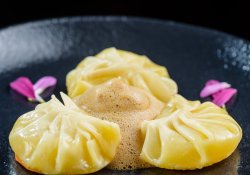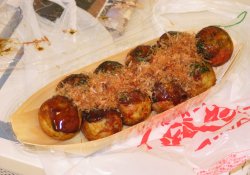Omusubi mixed onigiri rice Recipes and curiosities
On this page you will learn the recipe and some information about the Japanese dish Omusubi mixed onigiri rice Also known as onigiri.
Table of Content - About - Origin - Information - Ingredients - Preparation - Related
All about onigiri
Omusubi is a popular Japanese dish that consists of rice cakes filled with various ingredients. Also known as onigiri, this dish is a practical and tasty option for any meal of the day.
Omusubi is made with cooked and roasted Japanese rice, which is molded in the shape of a triangle or a ball. The filling can vary according to the preference of each person, but the most common are salmon, tuna, pork, chicken, vegetables or even moistened with soy sauce.
In addition, Omusubi can be served in various ways, such as grilled, fried or even raw.The versatility of this dish is what makes it so popular among the Japanese, as it can be consumed at different occasions and in different ways.
One of the most striking features of Omusubi is its practicality. It is a dish that can be easily found in convenience stores and even in sales machines on the streets of Japan. This makes it a quick and convenient option for those in a hurry or do not have time to prepare a complete meal.
In addition, Omusubi is a healthy and nutritious option as it is made with whole rice and can be combined with healthy ingredients such as vegetables and fish. It is also a great option for those who follow a gluten-free diet because Japanese rice does not contain this protein.
In short, Omusubi is a Japanese dish that stands out for its practicality, versatility and taste. Whether as a fast meal or as a snack during the day, it is a delicious and nutritious option for those who want to experience a bit of Japanese cuisine.
Origin and history of Omusubi misto onigiri arroz
Omusubi is a traditional Japanese dish, being a combination of rice and other ingredients, forming small rice balls wrapped in seaweed leaves. Its origin is believed to date back to the Edo period, in the seventeenth century, when rice was considered a sacred food and was offered to the gods in religious ceremonies. Over time, the dish became popular and became a practical and tasty option for the Japanese, being consumed on various occasions, such as snacks and fast meals. Today, there are various variations of fillings for Omus, such as tuna, salmon, vegetables and meats, making it even more versatile and appreciated.About the recipe
- Name of the plate: Omusubi mixed onigiri rice
- Name of the dish in English: Omusubi mixed onigiri rice balls
- Name of the plate in Japanese: おにぎり
- Name of the Romanian dish: onigiri
Information about preparation
- Time to prepare: 5 minutes
- Time of Cooking: 20 minutes
- Difficulty: SIMPLE
- It suits: 2 people
- Occasions: Autumn, spring, summer, winter, main meals, snacks
Ingredients – Ingredients
Check out the necessary and optional ingredients Omusubi mixed onigiri riceIt makes sense to improvise
- 150g of Japanese rice
- 15g of Furikake Rice (temperature of your choice)
- Omusubi mixed (mixed fillings)
- Onigiri (Japanese rice cake)
Watch a video of the recipe:
Recipes - How to Prepare
Now that you know the ingredients to make the recipe Omusubi mixed onigiri rice. Follow the instructions below in the preparation mode or step by step.
Method:
Cook the rice according to your preferred method, following our Japanese rice recipe, if necessary.
Add Furikake Rice spice to cooked and slightly cooled rice. Mix well until the spice is evenly distributed.
In a larger bowl, place about 320g of cooked rice (or two bowl of normal size). Add about 15g of rice spice and mix until a homogeneous consistency is obtained.
With your hands slightly wet, take a handful of rice and mold it into a triangle, pressing firmly so that it becomes compact.
Pack the onigiri in bamboo leaves and tie them carefully using the rope. Your authentic Japanese dish is ready to be tasted!
Tips:
- Try different flavors of Furikake to vary the spice of your onigiri.
- To facilitate the molding of the onigiri, wet your hands frequently to prevent the rice from grinding.
- You can also serve the onigiri without wrapping them in bamboo leaves, if you prefer.


